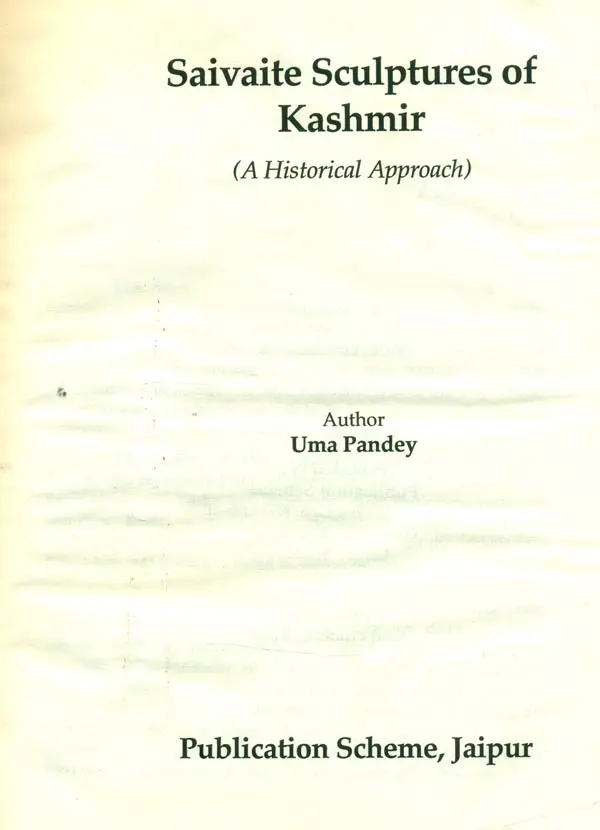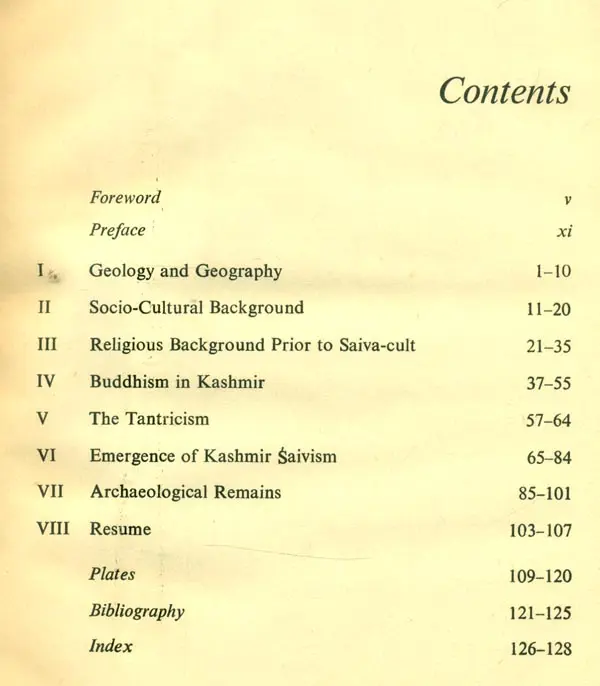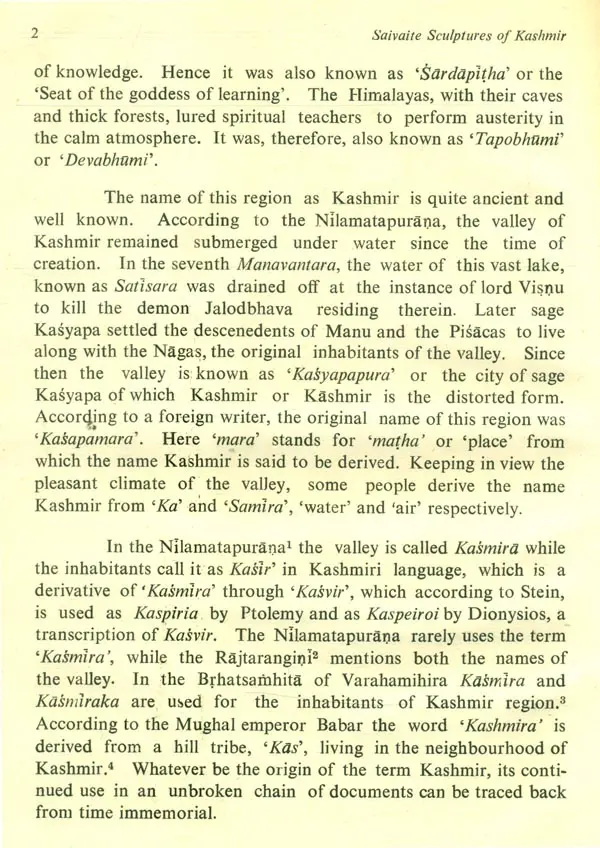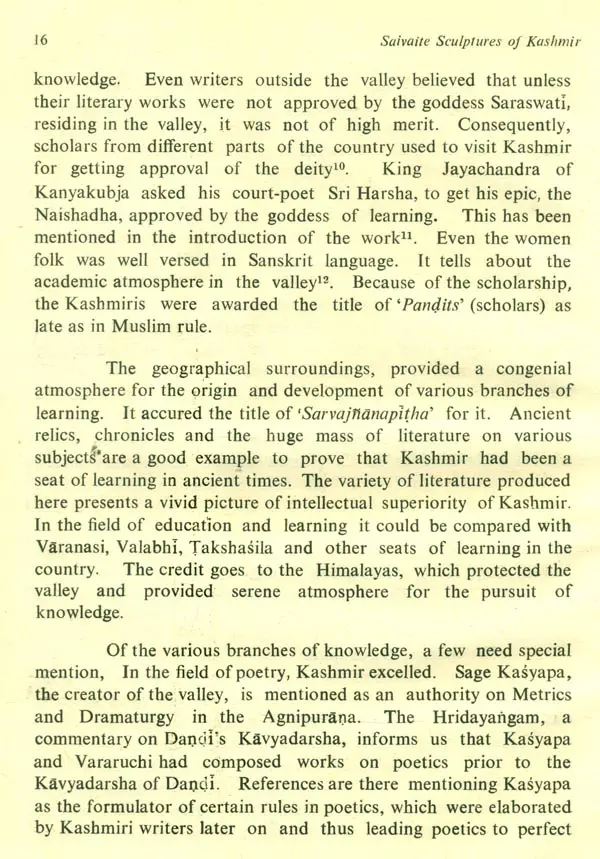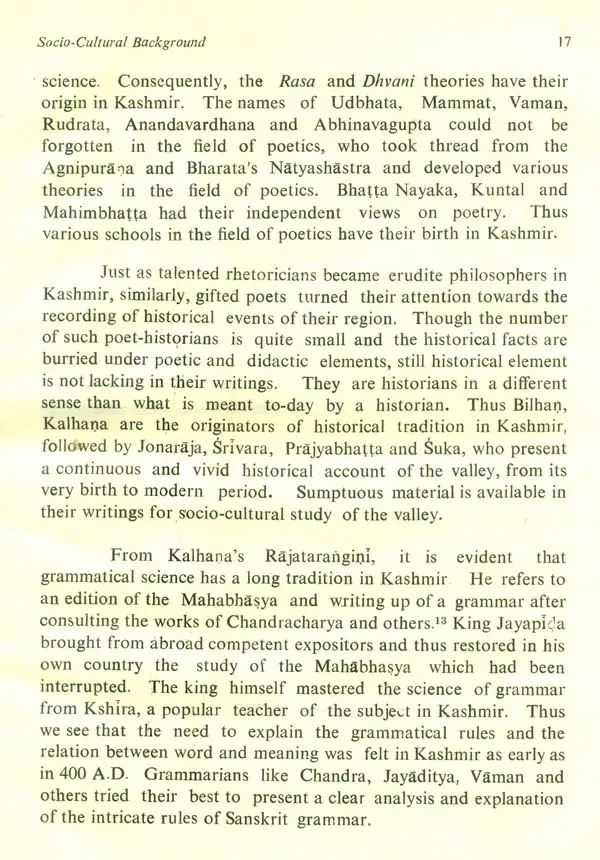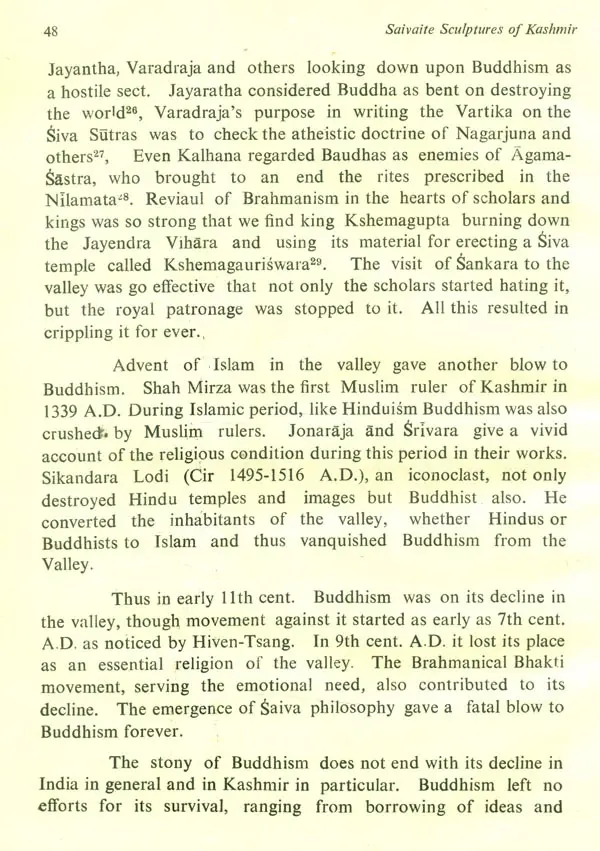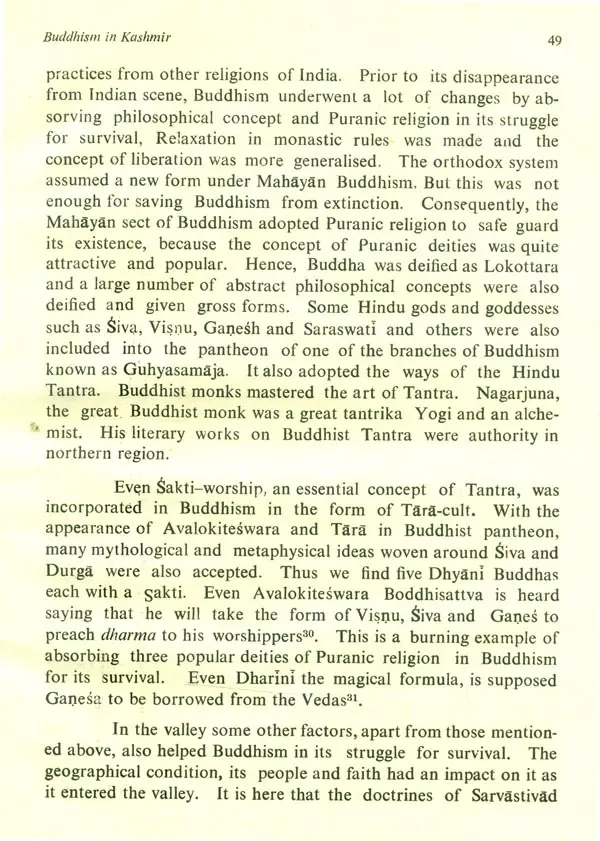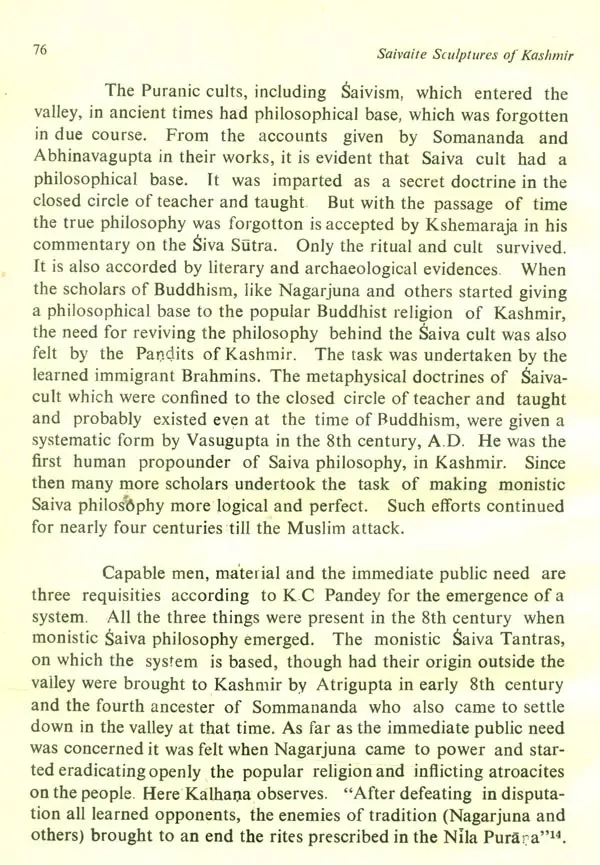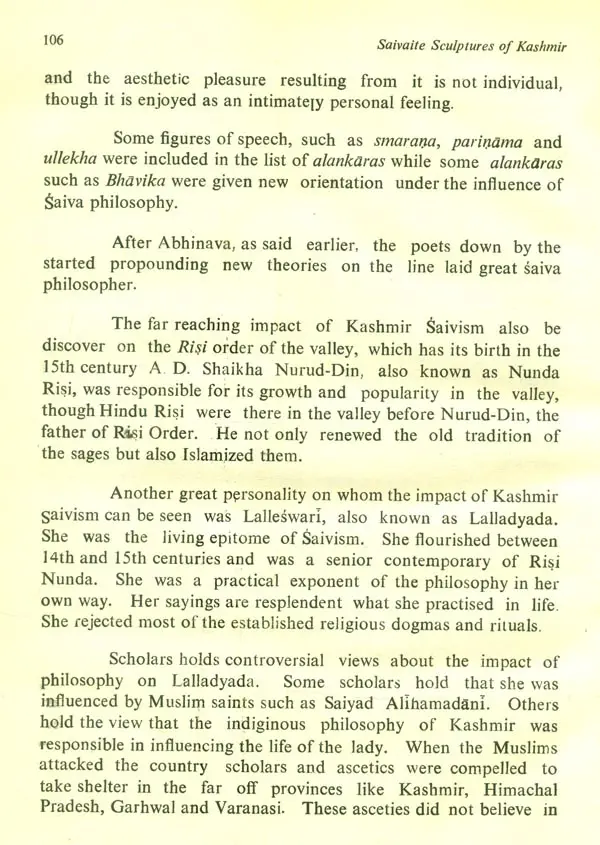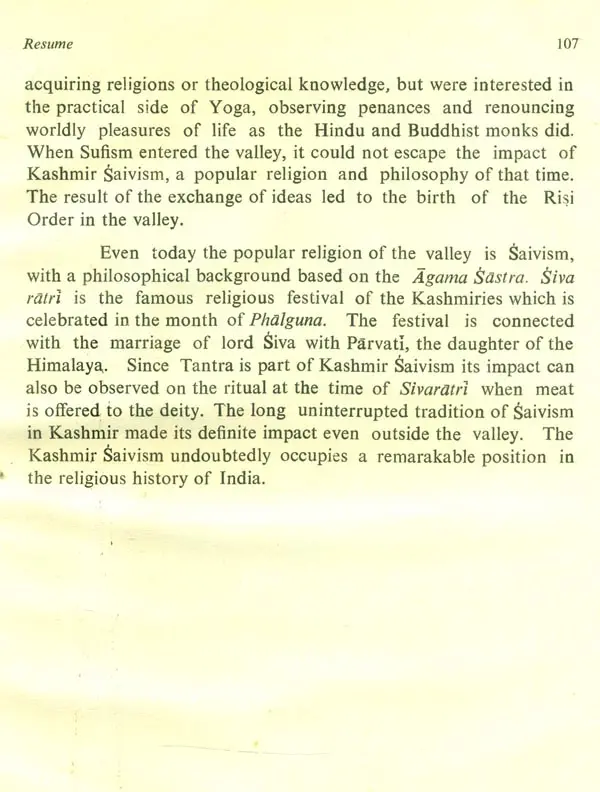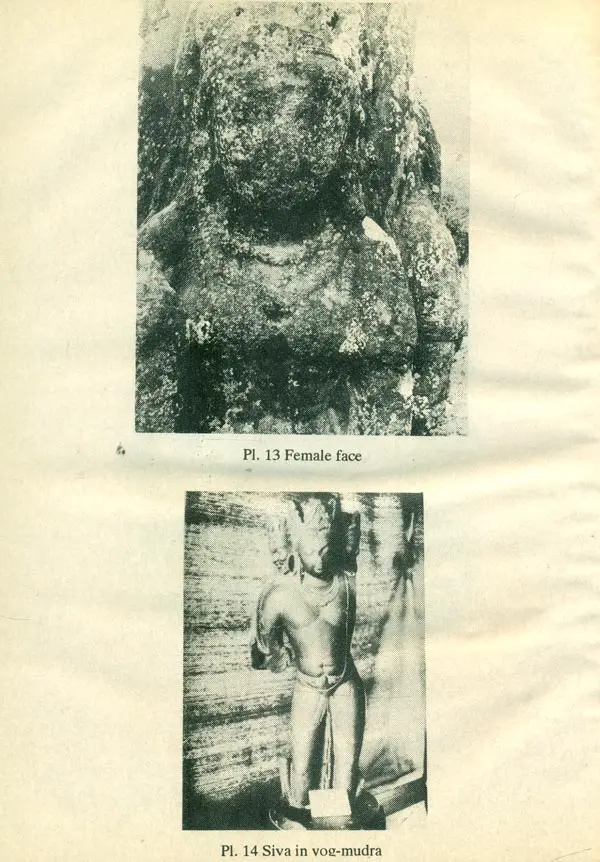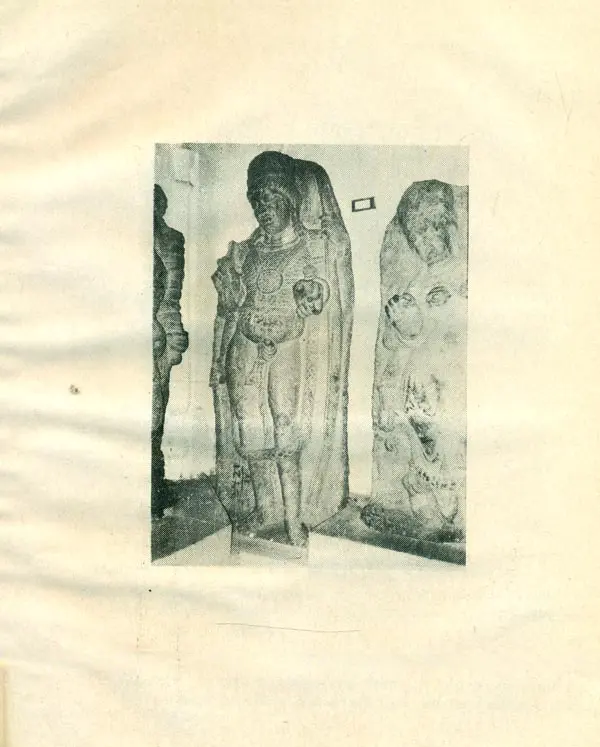
Saivite Sculptures of Kashmir- A Historical Approach (An Old and Rare Book)
Book Specification
| Item Code: | UAE830 |
| Author: | Uma Pandey |
| Publisher: | Publication Scheme, Jaipur |
| Language: | English |
| Edition: | 2016 |
| ISBN: | 8185263698 |
| Pages: | 136 (Throughout B/w Illustrations) |
| Cover: | HARDCOVER |
| Other Details | 9.50 X 7.50 inch |
| Weight | 370 gm |
Book Description
The book is well illustrated. It throws light on the culture and contribution of Kashmir.
The concept of Siva was evolved out of the Vedic deity Rudra, who represented the elements of awe and the irresistible force of nature. Yaks and some other early Vedic commentators.
identified Rudra with Agni, the destructive power'. This idea continued its association with the deity even when the archaic idea about him was mellowed down in course of time.
The designation Tryambaka used for Siva in the later texts, originally stood for Paramatma, the supreme deity. Goddess Ambika, who was subsequently recognized as the consort of Siva, is mentioned as the sister of Rudra''. The later conceptions, that Siva has three, eyes, that he drank poison (which made him Neagravay, that he wears tiger-skin and garlands of snakes. are conspicuous by their absence in the Vedic literature. According to some of the early Vedic texts, the clouds (megha, also called giri) were the abodes of Agni (i. e. lightning). This formed the basis for making the Kailasa mountain residence of Sive.
Similarly, Vrsabha (meaning cloud in the early texts) came to be associated with Rudra-Siva as his vahana (mount) Gradually, the epithets of Siva and his functions increased. In the Satapatha Brahmana Agni has eight names, including the name Rudra," This gave an idea to the writers of several Puranas that Siva had eight heads. The number, however, increased in mythology and art. According to the numbers of the three gunas four Vedas and five natural elements (sky, water, fire, earth and air) the number of Siva's heads became three, four and five respectively.
Similarly, 7 to 12 Rudras (usually recognized as 11) were also mentioned in several Puranas and the Tantra texts. Besides Visnu, Siva became the second important deity who influenced the imagination of the Purana writers.
The Vedic-Puranic concepts about Rudra-Siva gradually developed irate various manifestations of this deity. One of his. popular forms ‘were the phallus, symbol of prowess and fecundity.
The flames of burning fire go up horizontally resembling 'Sisna or lingo. This basic concept gave rise to the cult-image resembling Jyotirlinga. The Aryans originally did not adhere to the linga worship. They rather abhorred the idea, as can be inferred from their despiteful attitude towards the sisnadevas, referred to in the early Vedic texts.
In the developing Puranic pantheon, Rudra was given the form of a benevolent deity and was designated as Siva. He was. given a privileged place among the three main deities (trimurti or trinity), Enormous literature grew around him in the form of separate Saiva Puranas and the agama literature. The earlier forceful form of Rudra was converted into Sankara, of auspicious.
nature, the bestowed of happiness. This kind of transformation can be compared with the malevolent Yaks as, who were later on bestowed with the softer and nobler qualities.
Books are written on the history of Kashmir philosophy and on the' culture of the Valley. But no attempt has been made so far to analyze the causes which led to the birth of Kashmir saivisal in .the valley. The present work, therefore, is a novel one in its approach.
A serene atmosphere, far from the maddening crowd, is needed for art and literature to flourish. The geographical position of the valley in the Himalayan ranges provided a well-protected calm atmosphere for different branches of learning to be pursued here. Consequently, scholars from far and wide flocked here. As a result different cultures and religious sects flourished in the valley unhampered from time immemorial. Advent of Buddhism and the visit of Sankara to the valley provided a framework to be adopted by Kashmir Saivism, Men, material and need of the day led to the emergence of Kashmir Saivism in the Valley.
The birth of Saivism in Kashmir brought a revolutionary change in the outlook of scholars, artists and even of common men. Consequently new interpretations were given to literature, art and religion. Many new theories in the field of poetics came into existence. Thus this system of philosophy has a long ranging effect on art and literature. Even the religious life and ritual of the common man could not remain unaffected by the philosophy.
The Saiva-agamas and archaeological remains are the main sources of study.
The present book is the result of the project work sponsored by the Indian Council of Historical Research in 1982 for which the author is indebted to the Councial.
I express my thanks to Prof. K. D. Bajpai, Sagar University, for writing the foreword. I also extend my feelings of gratitude to Prof. Ajay Mitra Sastri, Nagpur University; Shri K. N. Dhar, Parman and Research Institute, Srinagar; Prof. P. N. Pushp and Shri M. Y. Taing, Director, S.P.M. Museum, Srinigar for their valuable suggestions and help.
I also wish to thank the authorities of the Archaeological Survey of India, the Centre for Central Asian Studies, Sriuigar; Raghunath Library. and the Dogra Art Gallory, Jammu, for extending all sorts of help needed in the project work. Finally, I feel delighted to express a word of thank for my son, Sri Padm Pandey, who helped me in various ways in the field work and typing work.
Book's Contents and Sample Pages
